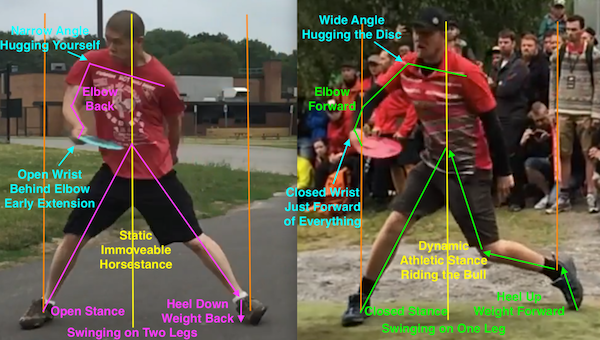If you swing a golf club downward or a baseball bat forward, do you feel like you're holding the head of the club back? To me it feels like I'm pulling the handle forward and momentum is holding the club back. Then as my shoulders open or I approach the ball, the angles work out to start the club head swinging outward and that's because my wrists start to break forward toward neutral. That's through ball contact and then they continue to release the rest of the way in the follow through.
It's a similar thing with a disc, the momentum/weight holds my wrist in a good angle and because my shoulders don't feel like they open until the disc is in a forward position, my wrist doesn't want to break open until then.
Yeah, when you explain it like it totally makes more sense. And going through motion it doesn't feel much different. Where I feel the active wrist is just at the very end, right before release. I could be somewhat confusing the feel of gripping tightly with active wrist. AND I'm probably hugging myself as I'm trying to learn how to switch to Feldberg style pendulum.
Think handle first, should help things out. In this case, disc is the handle.
Lead edge of of disc as handle you mean?
If you are hugging yourself, the wrist wants to fly open. If you are hugging the disc with wide upper arm and/or elbow bent leading forward, the wrist will lag back closed until you stop/slow extending your elbow and/or hip rotation.
https://www.youtube.com/watch?v=W2eWfwpahfk#t=2m10s

Do you stiffen the upper arm to keep it wide? I've been trying to focus on a loose and free form, trying to pendulum like Feldberg but my upper arm angle has likely gotten sloppy